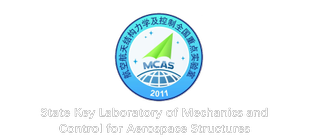Design, testing and modeling of a Magnetorheological damper with stepped restoring torque
Wei Sun, Haiyan Hu, Jiansheng Weng
Abstract:This article presents a novel rotary type magnetorheological (MR) damper, which has 12 input coils inside so that the restoring torque of the MR damper can be divided into 13 different levels, including the torque without input voltage. By connecting two arbitrary coils in series, one can realize the restoring torque of seven levels. The article first outlines the theoretical analysis, based on the inner structure and the theory of rheology, to reveal the relationship between the torque levels and the powered coils. Then, it presents the dynamic performance of the MR damper through an experiment under the sinusoid excitation, with the excitation frequency varying from 0.5 to 20 Hz. The experiment data enable one to train an adaptive neural network so as to establish a mathematical model for the MR damper. The result shows that the network can well predict the restoring torque for different excitation amplitudes and frequencies. For a control system using MR dampers, it is always necessary to know the input voltage (current) to MR dampers from the desired restoring force. The input voltage (current) can be determined by using a neural network or a fuzzy logical system, or by using the so-called on–off control, where the input voltage (current) is either zero or maximum compared with the desired restoring force. Instead of adjusting the input voltage (current), the restoring torque of this MR damper can be precisely controlled by selecting different sets of coils. If the desired restoring force settles in a level range, one can select the number of coil sets to make the restoring torque close to it. Thus, the control system using this MR damper requires no more additional neural network or fuzzy logical system to determine the input voltage (current). Furthermore, unlike the on–off control, the MR damper can refine the restoring torque to track the desired force. The stepped MR damper makes the control system less complicated and the control algorithm simple.
原文链接: https://journals.sagepub.com/doi/abs/10.1177/1045389X06055627





